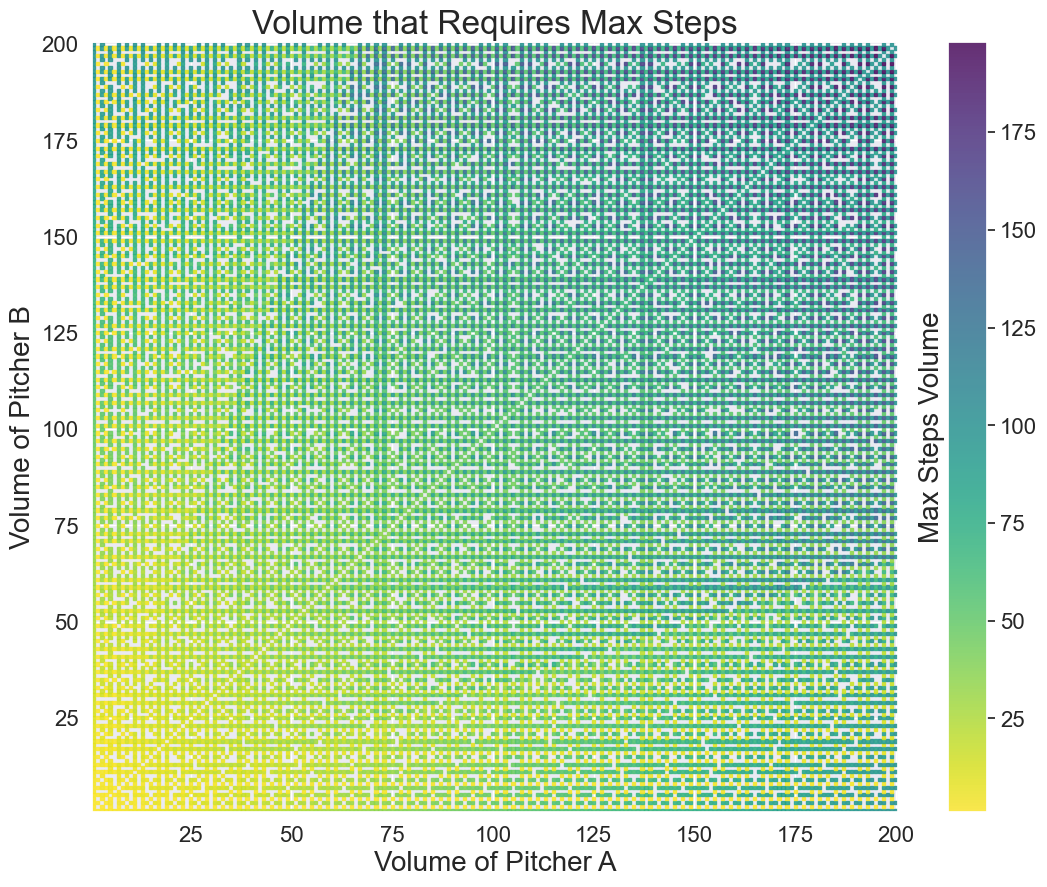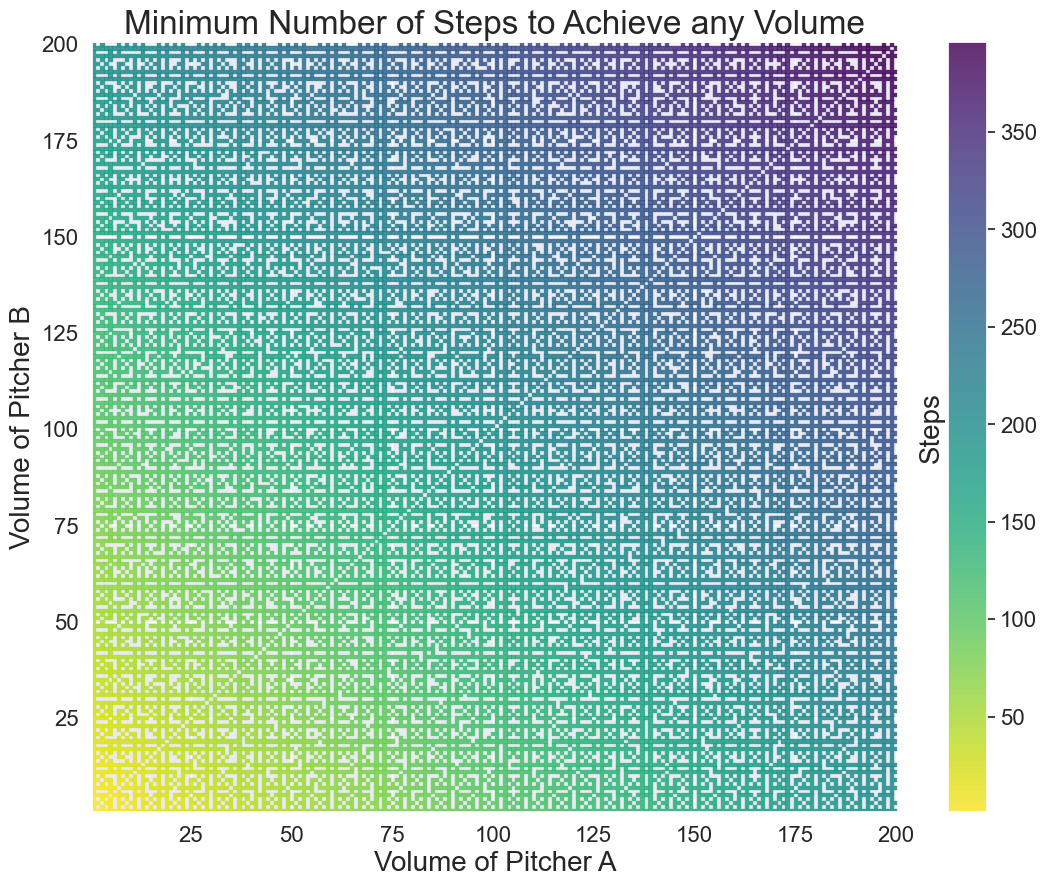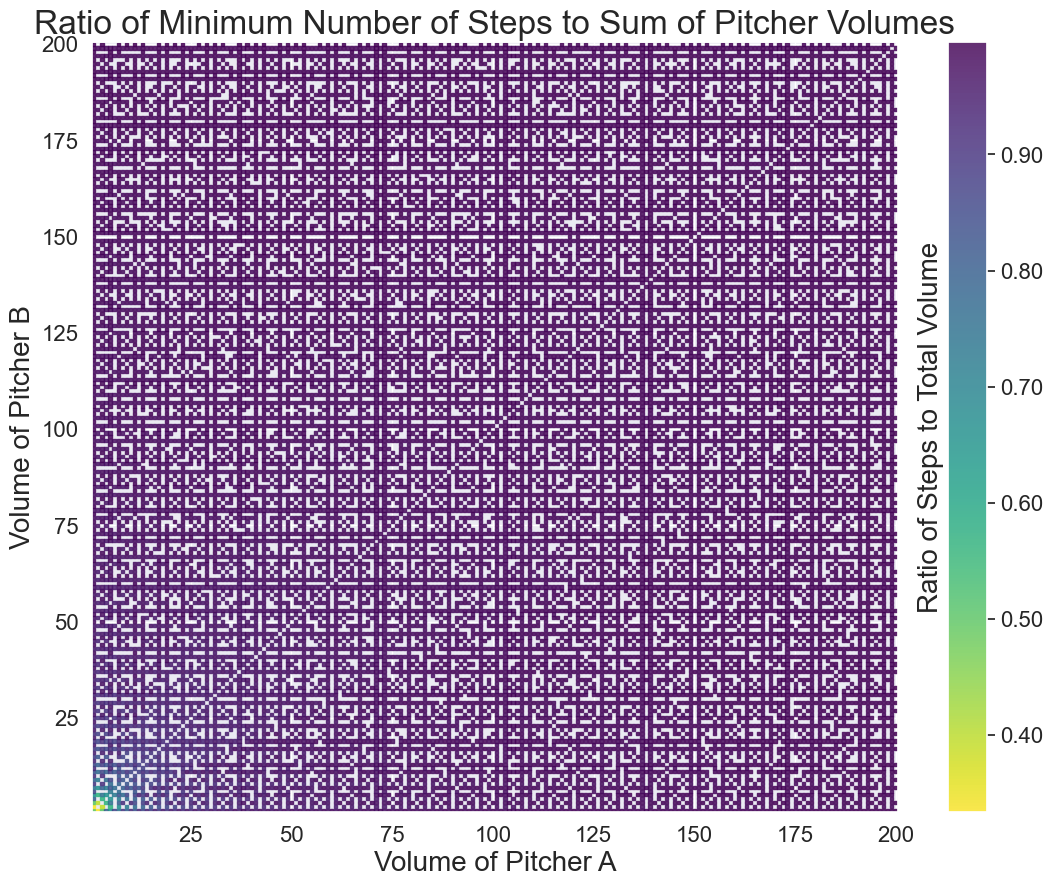Can You Pour the Water?¶
Last weekend, I saw an old friend of mine (in fact, he was the composer of an opera I performed in several decades ago!) who recently subscribed to The Fiddler. He confessed that the last time he encountered math puzzles like these, they were water pouring puzzles. “Oh, I can do one of those!,” I exclaimed.
So Joel, this week’s puzzle is dedicated to you!
I have two large pitchers with known volumes: 10 liters (“pitcher A”) and 3 liters (“pitcher B”). They are both initially empty. I can do one of six things with the pitchers:
I can fill pitcher A to the top with water from the sink.
I can fill pitcher B to the top with water from the sink.
I can empty the contents of pitcher A into the sink.
I can empty the contents of pitcher B into the sink.
I can transfer the contents of pitcher A to pitcher B, until pitcher A is empty or pitcher B is filled to the top—whichever comes first.
I can transfer the contents of pitcher B to pitcher A, until pitcher B is empty or pitcher A is filled to the top—whichever comes first.
Every time I do any one of the above six, it counts as a step.
What is the fewest number of steps required until one of the pitchers (either A or B) contains precisely 5 liters of water?


